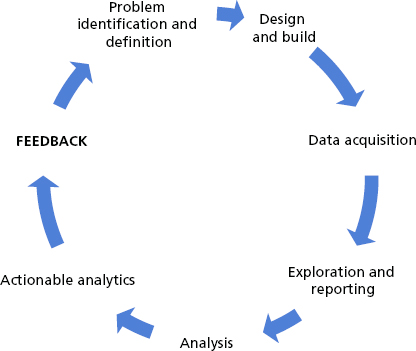Chapter 7Feedback
Closing the Loop. Now that we have taken action based on facts, analysis and modeling, let’s measure and monitor our results so that we can learn

I woke up early at my hotel in Beijing to prepare for a long day ahead: I was working in the retail industry.
I entered the meeting room right on time. Once I had met the group and they settled in their seats, I began, “If you are like most retailers, you may be wondering about four questions or in other words your key performance indicators.” I went on to ask the audience the four questions:
- How do I increase my fill rates without increasing inventory costs?
- Is it possible to decrease inventory levels by 10%, for example, without impacting service levels?
- How can I leverage all the product and customer data in our customer relationship management, enterprise resource planning, and manufacturing resource planning systems for service?
- How can I reduce cost of goods sold (bottom line) and improve service revenue (top line)?
I concluded: “A good answer to these questions lies within software for inventory optimization.”
The meeting was comprised of a small group of select executives. One of them raised his hand politely and said, “Is product inventory optimization software designed to address the need for inventory forecasting and product management needs for retailers and manufacturers?”
I answered, “Yes. Inventory ...
Get Understanding the Predictive Analytics Lifecycle now with the O’Reilly learning platform.
O’Reilly members experience books, live events, courses curated by job role, and more from O’Reilly and nearly 200 top publishers.

